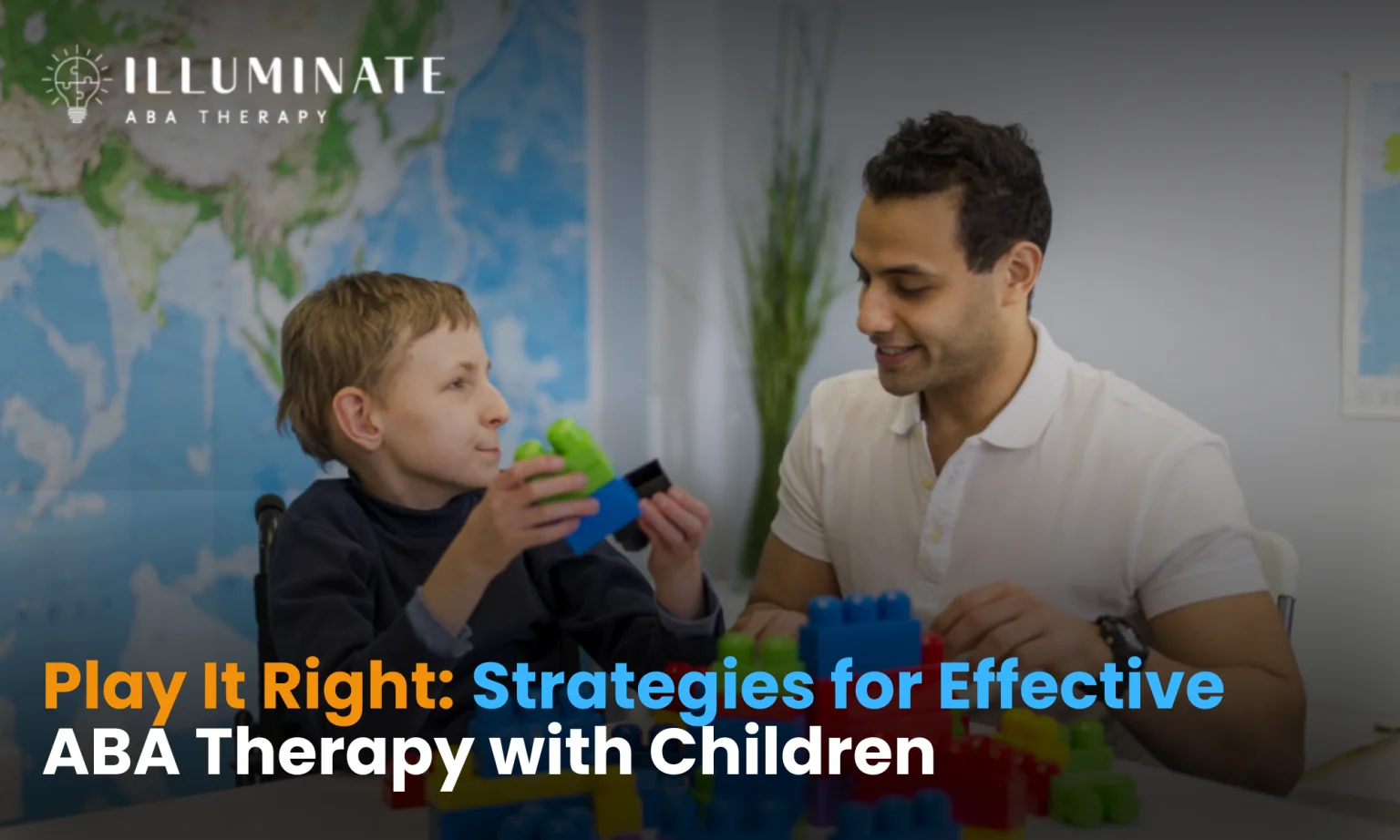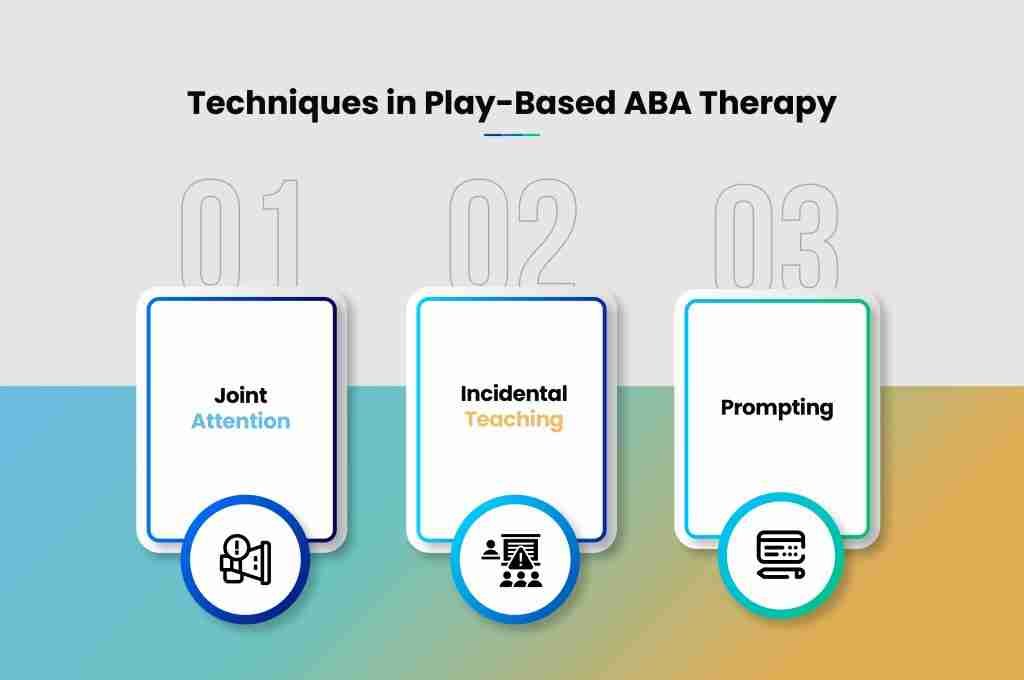Play It Right: Strategies for Effective ABA Therapy with Children
ABA TherapyJuly 17, 2025

Benefits of Play-Based ABA Therapy
In Applied Behavior Analysis (ABA), using play as a foundation offers some great perks for kids, especially those with autism spectrum disorder (ASD). Mixing play with ABA therapy really helps kids connect and pick up skills. Let's chat about how this play thing works in ABA therapy and how it boosts social skills.
Play-Based Learning in ABA Therapy
Play-based learning in ABA sparks all kinds of growth for kids with autism: think language smarts, brainpower, life skills, and how they connect with others. This approach builds a great base for all-around progress, as Golden Steps ABA points out. When play sneaks into therapy, kiddos stay more interested and grab those skills faster and better.
Through energetic play, kids dive into basics like taking turns, sharing, and teaming up. It's a huge deal for building friendships and handling different social settings. MeBe Family backs this up, saying play-based methods up the kids' participation game and improve their learning in ABA.
Improvements in Social Skills
Play-based learning is awesome for kids with autism to sharpen those social skills and make better connections with buddies. Being active in play activities fires them up to talk about their ideas, wants, and needs, which kicks their speech and language skills into high gear for day-to-day chats. Cross River Therapy notes how play-based ABA therapy pushes forward social skills, setting a strong base for better social chats and talking skills among kiddos with ASD.
Recognizing play as a teaching gem for all kids, even those with ASD, shows its super impact on their brain, physical, social, and emotional growth. Adding play into ABA helps kids soak up new habits and skills in a fun way. Using playful methods in ABA therapy, as Gold Star Rehab shares, gets kids way involved, boosts skill snatching, and kicks off a rad educational journey tuned to the special needs of kids with autism.
Techniques in Play-Based ABA Therapy

In playing-style ABA therapy, a mix of methods is used to spark kids' interest and boost their growth. Let's take a look at three standout methods: joint attention, incidental teaching, and inviting hints.
Joint Attention
Imagine joint attention like a fun game that gets children mingling and chatting. It's all about kids learning to share their focus, noticing social signals, and ramping up their people skills. This method gets children mixing with friends, family, or therapists while they're having fun, dipping their toes into building bonds and chatter skills (Gold Star Rehab).
By weaving joint attention into play, kids get to practice playing nice, sharing toys, taking turns, and being team players. This playful approach gears them up to mingle more and make tighter bonds with folks around them.
Incidental Teaching
Now, incidental teaching is like sliding lessons into everyday playtime. While kids are just being kids, caregivers can slip in teaching points as they pop up naturally, making learning stick more since it's part of their playtime fun.
This strategy zeroes in on particular skills or actions right as they unfold, letting kids soak up new tricks right in the middle of play. It keeps them involved and eager, learning amidst routines they know and love.
Prompting
And then there’s prompting. Think of it like giving little nudges that steer kids toward learning and polishing new skills. These nudges can be through words, actions, or signals, helping them catch on to what's needed without much fuss.
Therapists back off on those nudges bit by bit as kids get a hang of things, boosting their independence as they ace each task. Prompting is about gently leading them through learning and growth, making sure they're supported and not overwhelmed.
In sum, using joint attention, incidental teaching, and prompting in play-based ABA therapy makes learning a blast. Kids pick up skills while playing, getting better at talking, socializing, and day-to-day stuff. It's all about growth with a flavor of fun, especially for kiddos on the autism spectrum.
Addressing Tough Behaviors
Talking about tackling tough behaviors in kids through Applied Behavior Analysis (ABA) requires a couple of game-changers: chatting in new ways and figuring out how to chill (a.k.a. self-regulation).
Alternative Communication Methods
Diving into ABA therapy, you’ll find play as a secret weapon. Kids get to learn new, exciting ways to chat and play. Through these playful moments, they get to show what they're feeling, boost social smarts, and for kids on the autism spectrum, it's a win-win. It’s all about finding their comfort zone to explore emotions and express themselves with creativity and, more importantly, with ease.
Early Start Denver Model (ESDM) steps in here, marrying fun with learning. It’s like having your cake and eating it too. It spices up traditional activities with cool methods like Pivotal Response Treatment (PRT). This model multitasks—cognitive and motor skills improve, all while kids are having a blast.
Playing isn't just fun; it’s like taking a walk for the brain. It's crucial for kids with autism as it feeds their mind and soul with learning, moving, making friends, and real feel-good vibes. ABA programs that incorporate play are opening the door to new skills and bonding experiences too (Gold Star Rehab).
Self-Regulation Skills
But wait, there’s more to play than just chatting away. Through play-based ABA therapy, kids get to flex their self-regulation muscles—patience, taking-turns, and handling the fidgets.
For kids with autism, play offers a ticket to explore emotions at their own beat, skipping the hurdles they might face in regular talk therapy. With every game, children are silently picking up emotional smarts and a bit of resilience.
ABA principles, built around rewarding specific behaviors to up their social game and language skills, really work in beefing up self-control (Cleveland Clinic). Things like 'joint attention,' 'incidental teaching,' and 'prompting' aren’t just concepts, they're keys to unlocking the social side of kids, all in a warm and familiar setting.
Bringing play into ABA therapy crafts a road where self-expression and emotional wild-rides can be turned into positive and practical life skills. It helps therapists and caregivers lift kids from struggles to strong, from meltdown to mindful, giving them a real shot at thriving.
Building Rapport in Play-Based ABA Therapy
Making a friendly connection is the secret sauce in play-based ABA therapy with kids. Creating positive bonds helps communication thrive. In this style of therapy, the role of a good relationship and a parent's participation boosts the effectiveness of the sessions.
Importance of Therapeutic Relationships
Think of the therapy room as a cozy, welcoming place where a kid feels at home. That's exactly what therapists aim for in play-based ABA therapy. They focus on trust, empathy, and getting where the child is coming from. Good vibes mean kids are more at ease and eager to join the activities.
Therapists and children need to groove together with respect and open chat. This requires creating a safe spot where the child knows they're valued just for being them. When kids feel secure, they can explore their feelings freely, pick up important social skills, and work toward their goals with a little help from their friends.
Involvement of Parents
Getting parents involved in play-based ABA therapy is a big deal. Parents aren't just bystanders; they're key players in their child's growth and breakthroughs. Teaming up with parents aligns the progress kids make in therapy with their daily routines.
By inviting parents to join therapy sessions, therapists offer tips on how to support skills and behaviors at home. This teamwork gives parents the tools they need to back their child's journey and ensures that lessons learned stick beyond therapy walls.
Parents' participation also means looking at the whole picture, addressing everything the child needs. By joining forces, therapists can fine-tune approaches based on each child's unique mix of talents and hurdles, leading to real progress in social skills and behavior.
In play-based ABA therapy, the combined energy of therapists, kids, and parents forms a solid support team that fuels growth and development. By emphasizing the power of good relationships and including parents in the mix, children with autism can thrive in an environment that's all about nurturing growth and empowerment.
Learn About: Crafting Social Stories: Building Communication for Autism
